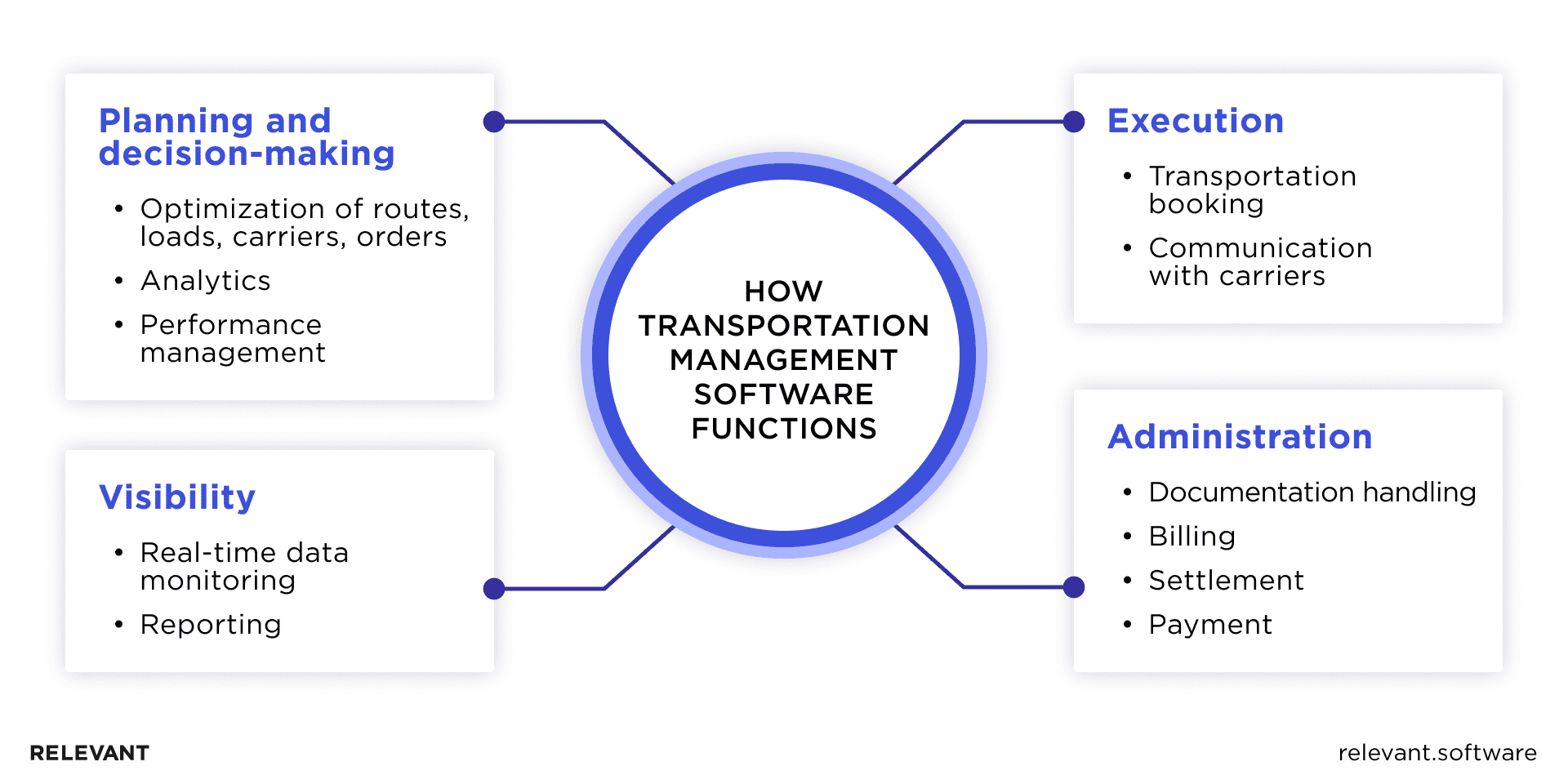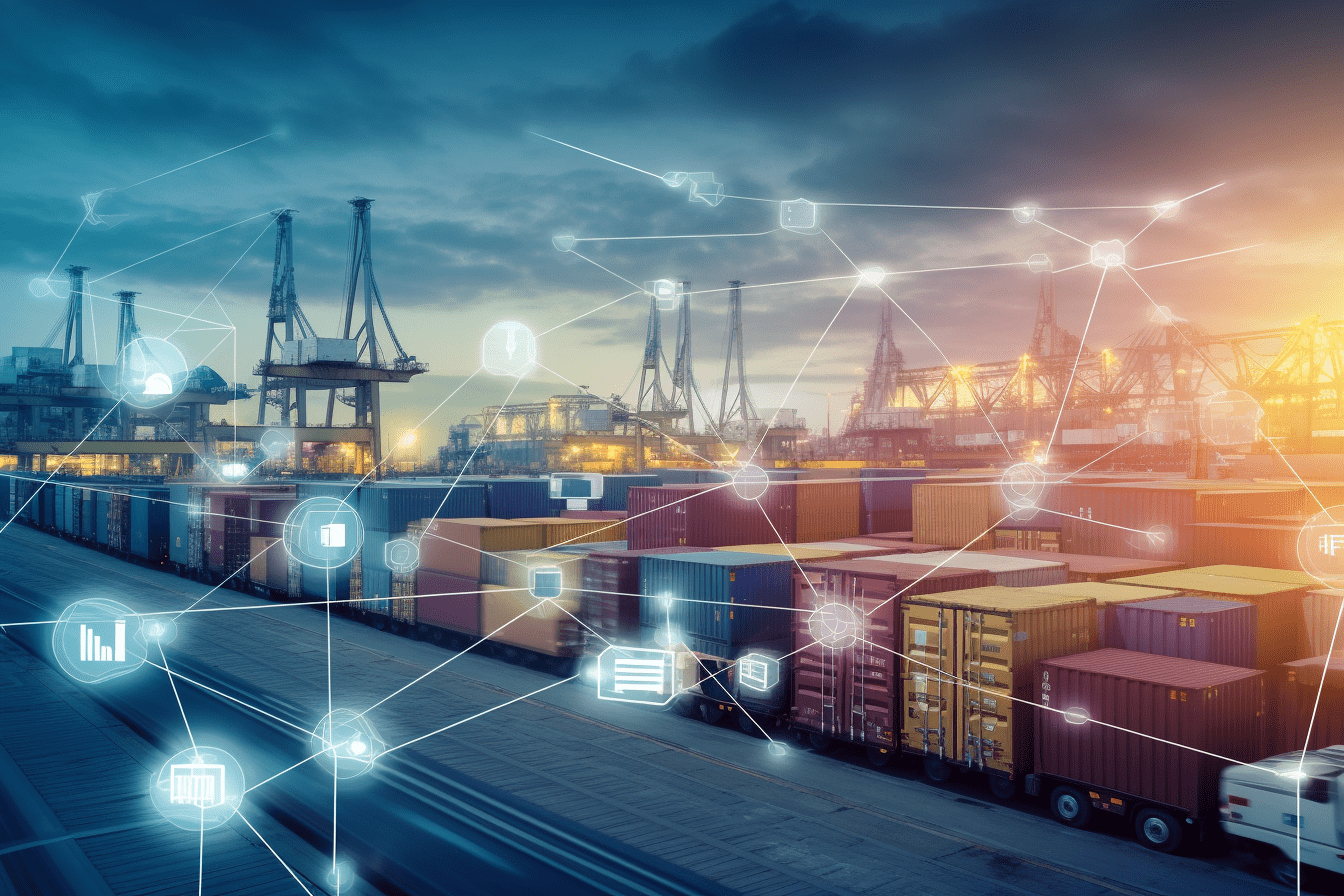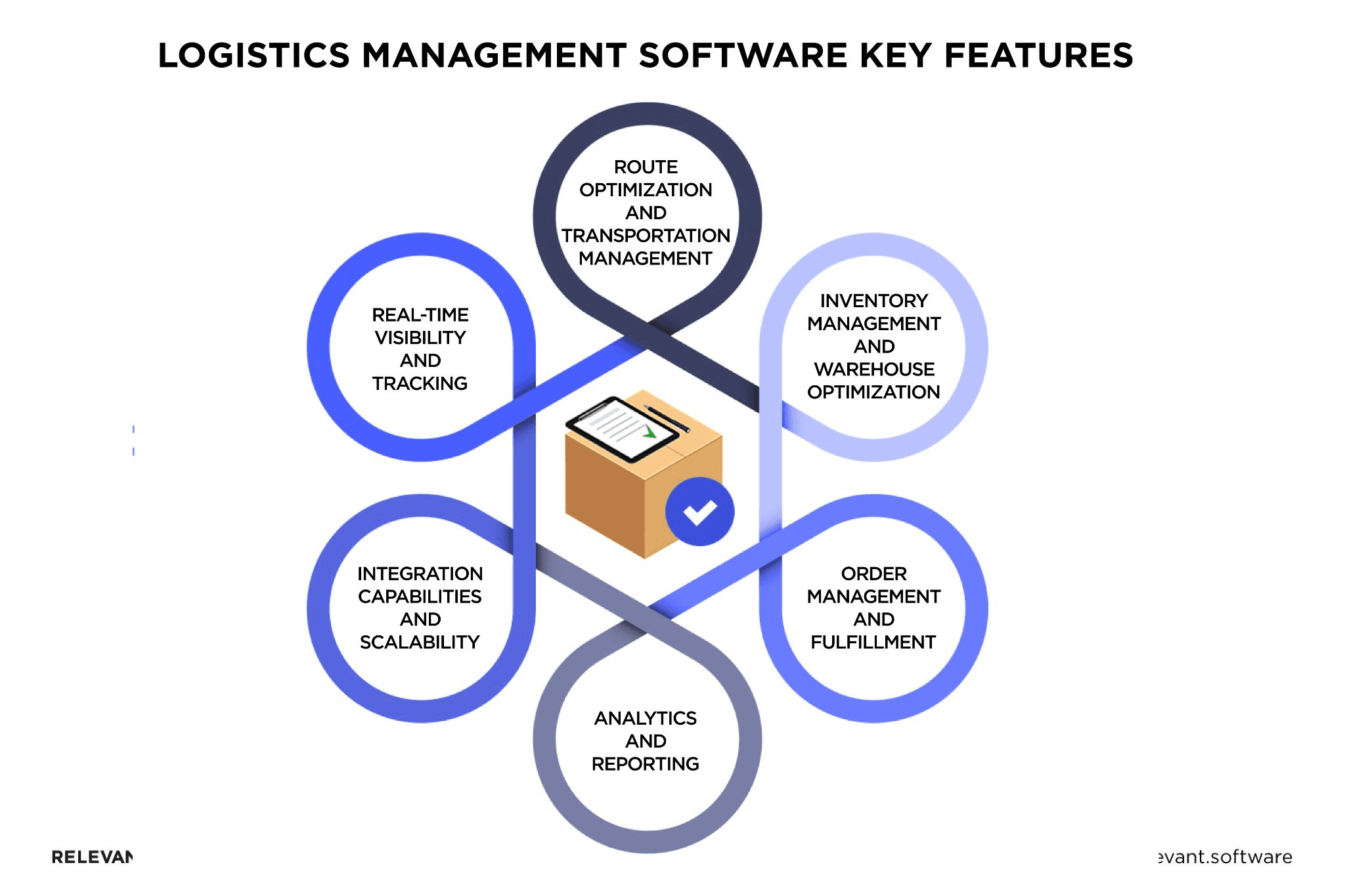Keeping Pace with the Future: Top Technology Trends in Logistics

In the wake of recent global upheavals, it’s become crystal clear just how essential robust and resilient supply chains are in maintaining the balance of our interconnected lives. As we navigate 2024, traditional logistics strategies and services face the ultimate test, forcing us to unlock new technology in logistics. An impressive 38% of enterprises are actively optimizing their supply chain technologies with a focus on enhancing the entire spectrum of processes from start to finish.
Embarking on this exciting quest, we’ll venture deep into the heart of the technological revolution, where shippers and logistics service providers must overcome economic, geopolitical, and environmental obstacles, armed with invaluable lessons in risk management and disruption recovery. And guess what? It’s within these challenges that we’ll uncover a treasure trove of innovative technologies reshaping the logistics landscape.
Get ready to explore the top logistics trends revolutionizing the industry, from cutting-edge infrastructure and warehousing solutions to the unstoppable force of digitization. Together, we’ll decode the secrets to achieving unparalleled efficiency, sustainability, and adaptability in this ever-evolving industry. Let’s dive in!
What is Logistics Technology and Why is it Crucial?
Logistics technology encompasses a diverse range of tools, systems, and innovations designed to empower stakeholders in the logistics sector to orchestrate the seamless movement of goods. This dynamic realm spans from the production facilities to the final destination—the end consumer—with remarkable efficiency and precision.
What’s the secret ingredient powering this feat? A perfect blend of advanced machinery, sophisticated vehicles, and cutting-edge software solutions, all working harmoniously to tackle the complexities inherent in this fast-paced industry. As the appetite for rapid delivery and accessibility to far-flung locations grows, the race to optimize and innovate in logistics continues at breakneck speed.
In a world where the stakes are high and falling behind is not an option, arming oneself with top-tier supply chain and logistics technology is the ultimate key to victory. By investing in systems that streamline operations and enable rapid problem-solving, businesses can stay miles ahead of the competition and ensure unparalleled customer satisfaction. That’s why in the race to excel in the delivery market, you should embrace logistics trends in 2024 and adopt new strategies that will set you apart.
Top Logistics Technology Trends in 2024
2024 has witnessed many vibrant trends impacting the logistics sector. Heads of supply chain technology should keep a keen eye on these logistics industry trends to elevate digital maturity and boost overall business performance:
Artificial Intelligence (AI) & Machine Learning (ML)
AI and ML are not new technologies in logistics, but colossal advancements in this field have widened their use cases and applications in the industry. However, let’s first define AI. In short, it’s a computing program that simulates human intelligence processes, which means it’s a self-learning algorithm that improves with the data it’s fed.
Within supply chain management, Machine learning and AI development services are widely applied in building predictive tools to enhance demand forecasting. These advanced tools can accurately predict future demand and help you skillfully avoid shortages or excess inventory issues by analyzing historical data, current trends, and even subtle patterns.

The AI integration in warehouse and supply chain management software minimizes the risk of human error, fostering a more reliable and seamless workflow. Gartner projects that 50% of supply chain organizations will invest in AI-powered applications and advanced analytics through 2024.
Moreover, AI-driven mechanical operations, fueled by robotics and computer vision, can pick, pack, and sort items with unprecedented precision and speed. No wonder 75% of large warehouses will use robotics by 2026. These smart systems can adapt to your evolving warehouse requirements and ensure seamless operations even as the business changes.
What’s more, AI and ML algorithms can create the most efficient paths for transportation, considering such factors as traffic, weather, and delivery time windows. For instance, the recent innovation by Carrier Logistics Inc. AI-enabled routing logic and planning optimization tools empower fleets to automatically route and assign shipments for each customer. This optimization not only reduces fuel consumption and operational costs but also ensures timely deliveries, which results in satisfied customers and a positive brand reputation.
Digital Twins
A digital twin is a virtual replica of a physical system, process, or object continuously updated with real-time data. The technology relies on AI and ML algorithms to simulate the real-world behavior of machines, allowing businesses to predict their lifespan and anticipate maintenance needs. With a market poised to skyrocket from USD 6.9 billion in 2022 to USD 73.5 billion by 2027, this cutting-edge innovation in logistics is set to revolutionize the industry.

Imagine a 3D visualization that mirrors the entire supply chain. It will give you valuable insights, uncover opportunities and risks, and allow for quicker mitigation of unforeseen challenges. Without endangering operations, you can assess worst-case scenarios. Overall, digital twins revolutionize product development and can help you with:
- Warehouse management
- Analyzing supply chain agility and behavior
- Supply chain visibility
- Identifying and addressing logistics bottlenecks
- Streamlining transportation planning
- Experimenting with supply chain design modifications
- Assessing supply chain risks and testing contingency plans
- Improving decision-making by leveraging valuable insights
- Reducing operational costs by saving on labor, inventory, transportation, and warehousing expenses.
- Driving efficiency
As the logistics sector embraces the transformative power of digital twin technology, software engineers can make their mark in this thriving landscape. From developing precise virtual replicas of supply chains to simulating warehouse processes and transportation routes, developers have the potential to impact the future of the logistics industry.
Blockchain Technology
Initially designed for the financial sector, this decentralized and encrypted data storage and tracking approach has evolved into game-changing logistics technology trends embraced by supply chain stakeholders worldwide. As a result, the blockchain market is projected to witness a staggering 39.78% CAGR from 2022 to 2027 and expand by over $ 2 billion.
The implications are enormous – think smarter inventory management, heightened security, and unmatched reliability in tracking and handling sensitive data. In addition, thanks to the fully digitized system, companies that choose to integrate blockchain will have the advantage of fraud prevention, bottleneck elimination, and error reduction.

However, successful implementation requires logistics providers to digitize and standardize data. By creating an ecosystem of supply chain partners in a blockchain environment, logistics providers can unlock the full potential of this logistics technology.
Some shining examples of successful high-tech logistics solutions include Mitsubishi Technologies, which has developed an innovative blockchain tracker to guarantee the precise and timely delivery of pharmaceutical products. Due to the tamper-proof nature of distributed ledgers, the solution provides unparalleled security and reliability.
Similarly, VeChain is revolutionizing the sector with its blockchain platform that offers supply chain management solutions, including product lifecycle management and smart contract capabilities.
As you can see, these blockchain-based solutions showcase the exceptional potential to drive greater efficiency, security, and transparency across the industry, paving the way for a new era of innovation in logistics.
Transportation Management System (TMS)
This software solution simplifies and optimizes logistics operations by managing the transportation of goods across different modes and carriers. A modern TMS plays a vital role in streamlining logistics operations by automating various processes:
- Route Optimization. TMS utilizes advanced algorithms and data analysis to determine the most efficient routes, ensuring timely deliveries and reducing fuel costs.
- Carrier Selection. It helps you automate the carrier selection process by comparing rates, service levels, and performance metrics. So you have better cost and quality control.
- Real-Time Visibility into the entire transportation process will provide you with the status of the shipments and help make better decisions.

A major reason for TMS growth is the fact that technology has significantly improved over the last few years with the incorporation of the three innovations in logistics. The first is AI which enabled the system to learn about various constraints, such as capacity, regulations, and hours of service, thereby improving shipment planning and providing a more accurate estimated time of arrival (ETA). AI also helps shippers identify carriers with consistent on-time service levels, lanes prone to delays, and optimal stop numbers to maintain efficiency without sacrificing service quality.
Another critical development in TMS is the implementation of real-time visibility solutions, which can be standalone or part of a multi-enterprise supply chain network. You can track the products and know exactly where they are. Meanwhile, container-level visibility is particularly important, as it drives the transportation management market to new heights and optimizes over-the-road shipments.
Lastly, integrating the Internet of Things (IoT) into TMS has led to more versatile and efficient fleet management solutions. Fleet management equipped with IoT devices can adapt to your unique requirements and enhance performance by providing insights on assets and vehicle usage and enabling proactive maintenance.
These innovations present exciting opportunities for software developers to create customized TMS applications that cater to diverse logistics needs. By leveraging AI and IoT software development services, it’s possible to develop robust TMS applications that drive efficiency and cost savings for logistics businesses.
Big Data Analytics
About 74% of supply chain executives consider big data analytics as one of the most crucial supply chain and logistics technology.
At its core, big data analytics examines large data amounts to discover hidden patterns and trends. In the context of logistics, this means analyzing data from various sources, such as shipment tracking, warehouse operations, customer feedback, and market trends. With this solution, logistics companies can gain a deeper understanding of customer behavior and introduce more customer-centered strategies to meet their expectations better.
Moreover, advanced analytics plays a crucial role in demand forecasting. By analyzing historical shipment data and market trends, logistics companies can anticipate fluctuations in demand and adjust their operations accordingly. This proactive approach allows for better resource allocation and cost optimization, ultimately increasing efficiency and competitiveness.
Operational efficiency is another significant benefit of advanced analytics. A close look at the data, like fleet maintenance patterns and traffic flow, will help you identify inefficiencies and areas for improvement. Equipped with this information, you can streamline processes and minimize the risk of disruptions.
As businesses recognize the value of data-driven trends in transportation and logistics, there is a rising demand for expertise in developing advanced analytics tools. By hiring big data engineers, you can make significant strides toward adopting data-driven models to facilitate more informed and efficient logistics operations.
Cloud Logistics
One of the primary benefits of cloud logistics is the scalability and flexibility it offers. By developing cloud-native SaaS logistics solutions, you’ll be free to easily scale your operations as needed without the constraints of on-premise systems. Thus, for instance, cloud-based warehouse management software turned out to be much more efficient, offering higher control standards.
Beyond scalability, cloud logistics offers real-time data access, enabling better coordination and decision-making across teams. With live data from multiple stakeholders in the logistics process, you can quickly identify and address potential risks and issues, ultimately improving efficiency and reducing errors and delays.
From transportation to inventory asset management software, the sector can take advantage of cloud solutions while minimizing errors and delays by automating processes. Today scalability, security, and automation are key to success, so don’t sacrifice them. Instead, find a reliable software development partner with logistics domain expertise who will help you migrate the existing system to the cloud or build a custom SaaS solution to drive efficiency, cost savings, and streamline operations.
Internet of Things (IoT)
You might be familiar with the term “Internet of Things,” but let’s clarify it. Just as the Internet connects various computers to one another, IoT connects a myriad of devices and sensors, allowing them to communicate and interact. You can check our Sensor Innovation and Airthings cases to better grasp the idea of IoT.
IoT devices collect and analyze data in the logistics sector to help companies streamline their operations, optimize infrastructure maintenance, and build resilient supply chain management with IoT. Considering the broad-ranging IoT capabilities, the number of IoT devices is projected to double by 2030 and reach 30 billion.

So what logistics processes can it improve? One of the critical applications of IoT is asset tracking, which allows for the real-time monitoring of cargo and vehicles. Valuable insights like vehicles’ location, condition, and expected arrival times will give you better control over shipments and more accurate decision-making.
Moreover, using the data from IoT devices, you can predict and schedule fleet maintenance more effectively while also reducing fuel costs. Plus, you’ll have real-time weather and traffic data that will help optimize routes. Equipping your vehicles with IoT systems and asset-tracking devices will help ensure your fleet operates at peak efficiency and consistently meets your business objectives.
IoT is also transforming warehouse and inventory management as it helps you monitor stock levels, track the movement of goods, and maintain optimal storage conditions. The data can also help you improve worker safety and reduced waste. For example, DHL, a globally renowned logistics company, attaches IoT devices to warehouse roller cages and bins to prevent collisions and ensure employee safety. Meanwhile, other sensors are installed to control temperature, saving them pretty much cash on electricity.
IoT is even paving the way for innovative delivery methods, such as drone-based deliveries, another innovation in logistics we’ll discuss below.
Self-driving Vehicles and Drones
Last-mile delivery accounts for 53% of total transportation costs, making the adoption of autonomous vehicles for this purpose an attractive prospect for cost reduction and efficiency improvement. Moreover, companies are actively testing self-driving trucks and delivery vans, indicating their impact on logistics is just around the corner.
Drone technology and self-driving vehicles offer an innovative alternative to traditional delivery methods, especially the most expensive last-mile deliveries. Compared to road delivery, drones can make up to twenty deliveries per hour, while human couriers can only manage about two. This efficiency makes drone-based delivery a cost-effective and viable option. Not to mention reduced emissions and fuel consumption, which are also vital nowadays. Several big corporations, including Wing, Amazon, UPS, Matternet, Flytrex, and Zipline, have been testing drone deliveries for the past few years and have successfully completed small package deliveries to various locations.
Despite the hurdles associated with autonomous vehicles and drones, such as FAA regulations, public attitude, and technological constraints, more and more companies are jumping into the bandwagon, expecting to reduce delivery costs and enhance customer experiences.
These technologies signal the dawn of a significant transformation in modern-day supply chain models. As legal and regulatory considerations are addressed, the adoption of autonomous vehicles and drones will continue to reshape the logistics landscape, driving efficiency and innovation in the industry.
Augmented and Virtual Reality
The use of immersive technologies like Augmented Reality (AR) and Virtual Reality (VR) offers innovative solutions that enhance the digital experiences of employees and customers. Nowadays, these technologies are more accessible and being adopted in logistics due to their numerous advantages.
AR technology has the potential to transform employee training and reduce warehouse injuries. By overlaying digital information in the real world, AR can provide employees with real-time guidance, reducing the learning curve for new hires and enhancing overall operational efficiency.

Also, AR is an excellent solution to typical warehouse challenges: inconsistent inventory levels and misplaced items. In contrast to traditional paper-based management, AR can display information about product locations or optimal picking routes directly onto workers’ vision, allowing them to avoid mistakes and complete tasks more efficiently.
On the other hand, VR can boost logistics planning and simulations. Immersive 3D environments allow logistics professionals to explore and test various scenarios without physical implementation. It’s particularly beneficial for warehouse design, layout optimization, and testing new processes or technologies before investing in real-world changes. Additionally, VR-based simulation can offer employees a safer environment for practicing and developing their skills.
As AR and VR continue to advance, their adoption in the logistics industry will undoubtedly increase, revolutionizing various aspects of the field and unlocking new possibilities for efficiency and innovation.
Real-Time Supply Chain Visibility
In 2024, enhancing Real-Time Supply Chain Visibility (RTSCV) is expected to remain a top priority for logistics companies, with 70% of organizations citing it as their third primary strategic focus. With crucial information throughout the supply chain, businesses can address logistical challenges and inventory shortages, make data-driven decisions, and optimize their processes.
Advanced tracking technologies and real-time data integration, such as traffic patterns, weather conditions, and inventory details, are crucial in achieving supply chain visibility. The advancements in RTSCV would not be possible without IoT-powered devices, GPS tracking, and cloud-based systems that work in tandem to collect and transmit data from various points within the supply chain. They help connect all stakeholders, creating a seamless flow of information in real time, facilitating informed decision-making, efficient operations, and enhanced customer satisfaction.
Companies like Kraft-Heinz and truck manufacturer Daimler are among the early adopters of Microsoft’s ‘Supply Chain Center,’ seeking to improve regulatory compliance and risk management. As RTSCV allows businesses to identify potential disruptions and address them proactively. Additionally, real-time visibility on your supply chain leads to faster response times since you can quickly react to changing conditions or sudden shifts in demand. Finally, as RTSCV ensures timely and accurate deliveries, you’ll improve customer experience and satisfaction.
Robotics and Automation in Warehouses
More than 80% of warehouses are run manually, offering huge potential for automation. Driven by the need to improve efficiency and productivity, the logistics sector is experiencing a shift, with warehouse technology trends like robotics and automation taking center stage.
Robots started to work alongside humans, taking on repetitive tasks and providing essential support during worker shortages. Robotics technology, in particular, has enabled warehouses to handle complex tasks with greater precision, reducing the likelihood of errors that could result in lost time and resources. In particular, they excel at sorting, packing, and picking. Furthermore, automation increases delivery accuracy and profitability, reducing human errors. And robots offer greater workforce adaptability and improve worker safety by replacing them in high-risk jobs.

Investments in automation and robotics are steadily growing, particularly in warehouse operations and autonomous trucks, as they help logistics companies streamline processes, manage hazardous activities, and boost productivity. Despite the low warehouse automation rates, industry experts predict that 75% of large warehouses will adopt smart robots to support their operations in 2026.
Note that you should integrate warehouse management software with these advanced systems to maximize the benefits of robotics and automation. By doing so, you’ll ensure seamless data flow between the management system and the automated equipment, allowing for real-time monitoring and optimization of operations. Moreover, this integration will help your business adapt quickly to changing demands and implement data-driven strategies for continuous improvement.
Bottom Line
As we navigate through 2024, the logistics industry is undergoing significant transformations driven by emerging technology trends. These advancements can address the complex challenges transportation and logistics companies face, allowing them to remain competitive and meet evolving customers’ expectations. In addition, the changing geopolitical and economic landscape has set new standards, rewarding businesses that embrace agility and resilience. Technology development and adaptability are the key elements for a successful recipe that offer stable operations amid general instability.
Relevant Software is a trusted logistics software development partner that understands the value of technology and custom solutions in the ever-changing logistics industry. With over a decade of experience working with transportation and logistics companies, we have the expertise and knowledge to help you achieve your business goals through state-of-the-art logistics technology solutions.
Our team of experts is ready to bring your vision to life by developing a highly efficient and cost-effective software solution tailored to the specific needs of your organization. Don’t hesitate to contact us for a professional consultation – we’re here to assist you every step of the way as you embark on your journey to harness the power of the top logistics technology trends in 2024.



